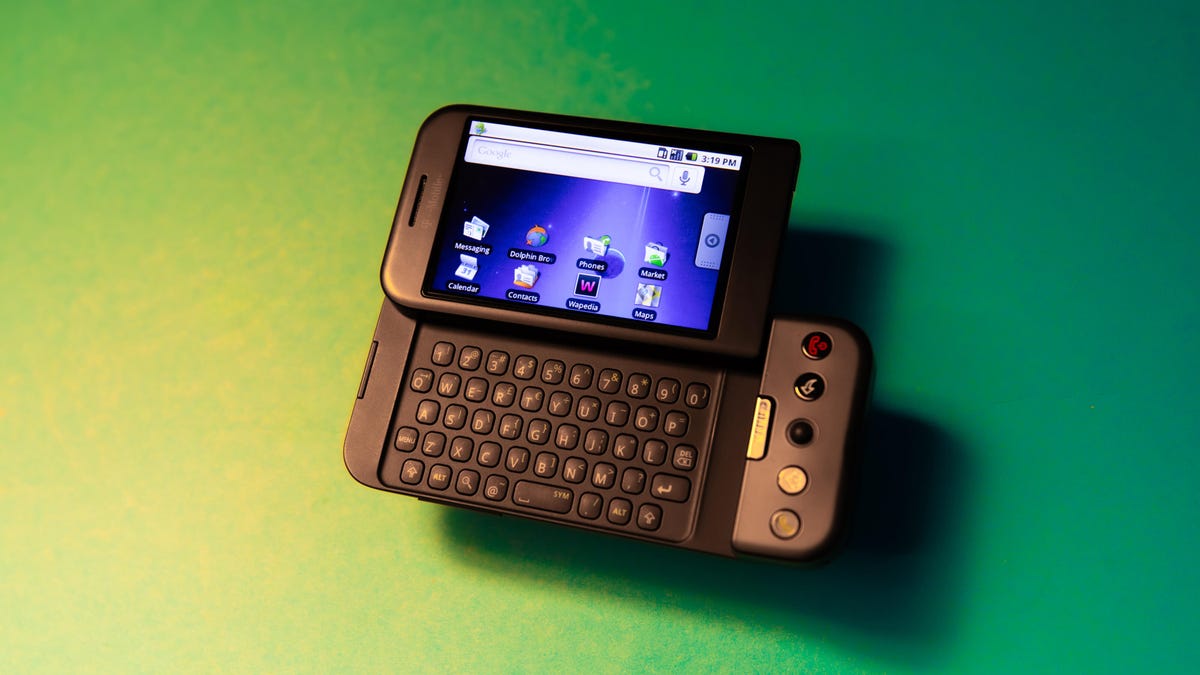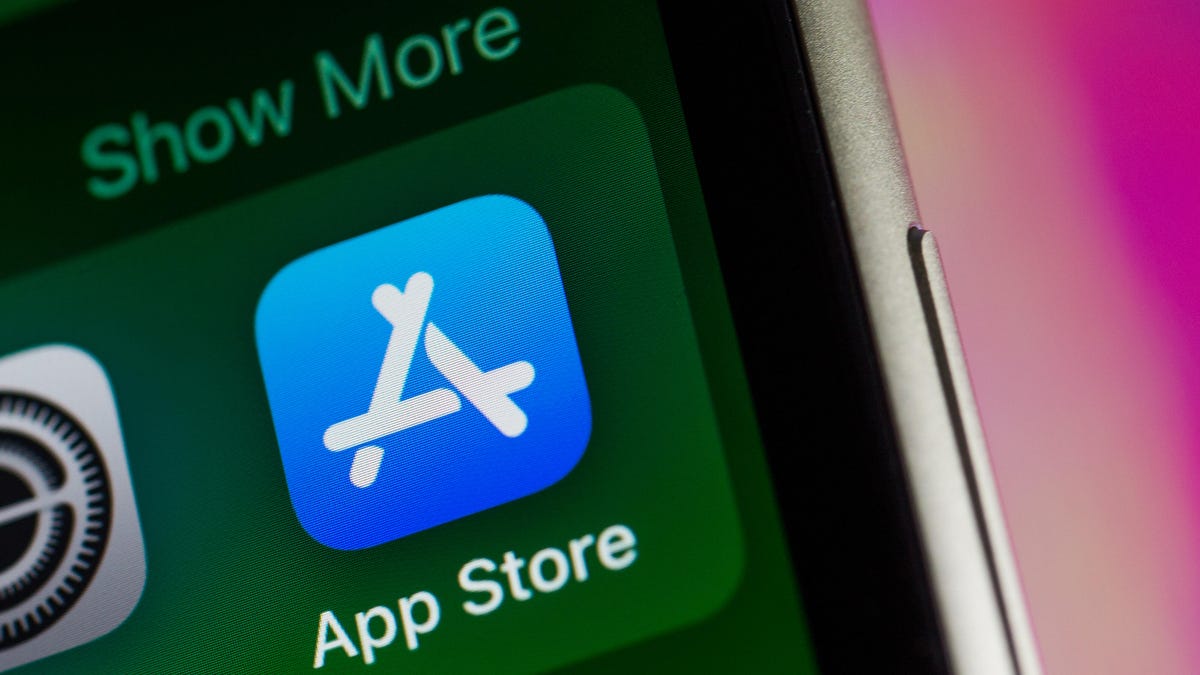Google Helped Spark a Phone Revolution by Doing a Simple but Radical Thing

I’ll never forget my first impression of using the T-Mobile G1 — known as the HTC Dream outside the US — the first-ever phone running Google’s new Android software. In fact, it’s hard to forget the fun, if not seamlessly functional, combination of slide-up screen, deeply recessed QWERTY keyboard and swooshy navigational trackball. But what set my fingers wagging as I sank deeper into a beanbag chair that telltale day in 2009, months after the phone reveal, wasn’t the phone at all, but the arrangement of pixels on its 3.2-inch display.
A software reviewer with a personal campaign to become CNET’s one-and-only-dedicated mobile apps writer, I was at a Google developer conference just down the street from our San Francisco office for one reason alone: To go hands-on with new apps to run on Android, Google’s daring rival to Apple’s smash-hit iOS for iPhone. A wave of third-party apps was coming to swell the Android Market, which had just about 35 apps when it first launched in 2008, and they were coming fast.
I knew I would be one of the first people in the world to demo those apps. But what I didn’t know was just how spectacularly Google’s Android platform would rocket to world domination or how these apps would provide significant fuel to get it there.
Here’s the proof to all that pudding: As the first Android phone prepares to mark its 15th anniversary this Saturday, Sept. 23, there are more than 4.6 billion estimated smartphone owners — and more of them use Google’s OS than any other rival. While Apple owns over half the US market, seven out of 10 phones on the planet ran Android as of August 2023, according to StatCounter — a staggering 70% of the world’s phone population.
Android’s control over the global majority reflects Google’s profound impact on society. Thanks to advancements in powerful mobile computing, affordable handset options and wide availability of devices, the more than 3 billion devices that actively use Android (according to Google, in an email) have largely replaced standalone cameras and, in many places, personal computers. And anyone can use them.
Today, over 2.5 million Android apps populate the Google Play store, according to Statista. (Google declined to share exact numbers.) But the first generation of programs were clunky and underpowered compared with other smartphone programs of the day. Often with these first Android “applications,” as we then called them, load time was glacial and crashes frequent. Graphics bordered on juvenile, and the entire experience hearkened back to Web 1.0. Yet Google co-founders Sergey Brin and Larry Page hardly needed to strap on rollerblades to grab eyeballs during Android’s debut on Sept. 23, 2008, for us to take note.
I mean, this was Google. On a smartphone. They had our attention.
Along with Apple’s iOS, Android would rewrite the smartphone rules. Google just needed to harness the same revolutionary spirit as Apple’s iPhone did in 2007. Google, too, needed a platform where mobile apps proliferated and were dead simple to use.
Google’s success was hardly accidental. Android’s dessert-themed versions like Cupcake (Android 1.5) and Lollipop (Android 5.0, 5.1) inspired dramatic reveals online and in person. Google forged strategic partnerships with hardware makers like Samsung and Motorola. And it beat Apple’s iOS by being first to push notifications, turn-by-turn navigation, mobile payments and wireless charging — all advances that helped create the do-everything phones most of us would feel lost without today.
Google continues to write the next chapter too. Android developments have ushered in an era in which screens on tablet-size phones like the Samsung Galaxy Z Fold 5 fold in half and apps can now leap and bend from one configuration to the next, even across multiple screens.
If anyone looking at the first Android apps predicted the platform’s world domination, it sure wasn’t me. I probably was too much of a n00b to have declared the withering of every healthy rival that wasn’t Android or iOS. Especially since erstwhile competitor Symbian once commanded 70% global market share. BlackBerry and Microsoft’s Windows Mobile platforms were shining stars in their own right, and Palm’s WebOS revamp later bloomed into a tech media darling. In many ways, these established rivals far outstripped Android and Apple in power and sophistication.
Looking back, Google’s decision to follow Apple and peel back apps to their essence was radical given the way smartphones were going. Was that the point all along?
Context, as it’s said, is everything. Stay with me here. Let me paint you a picture.
Google’s first “phone” set the stage
The Apple iPhone: That made sense. Apple was still cultish and boutique but had built mainstream credibility popularizing the iPod, its signature portable music player. The iPhone, then, was like a bigger, better iPod that made calls, and — unheard of — you could navigate by putting your finger right on the screen. But Google was an internet search company that also sold a lot of ads. A Google phone… did that make sense?
“Someone feverishly scratched a dry-erase marker on a corporate-size whiteboard,” I wrote of a planning meeting I attended ahead of the 2008 launch. “Would it be called the Google Phone, or the G Phone?” Neither, it turned out. It wouldn’t be until eight years later, in October 2016, that the first “pure Android” Pixel phone arrived, without an extra software layer or graphics the phone brands added to differentiate their brand from others. And Google didn’t seem to mind one bit.
HTC was a frequent Google partner in the early Android days. The T-Mobile G1/HTC Dream had a unique design that was sometimes frustrating to use.
Working with device makers like emerging powerhouse HTC to craft a rainbow of compatible hardware while Google supplied the Android software was key to Google’s brand of genius. So was summoning scores of third-party developers — many hungry to cash in on Android as they were starting to with Apple — to supply a fresh injection of apps running on the new platform.
That’s how I eventually found myself embraced by a bean bag in a quiet pocket of San Francisco’s Moscone Center, tapping my way through a parade of new Android apps, many of them modeled on similar versions first made for iPhone.
I recall leaving the conference with five app demos that day, my original writeups seemingly lost to a forgotten corner of the internet. One I remember was TuneIn Radio; a colleague would describe a later iOS version as “near-perfect” for its day. In the demo I saw, you could select radio stations from all over the world and see what other people were listening to on the app right at that moment.
One screen included a leaderboard of popular songs, another a world map. Part of the demo didn’t work, and I was asked, not for the last time, to lean into the description and let my imagination do the rest. The executive running the demo beamed out from the bean bag next to mine, proud of the app’s handful of options.
I remember thinking, “Cool… but is that it?”
Just like everyone else, I had a lot to learn — and unlearn.
“Radical” Android apps helped flip the script
Here’s what you need to know about apps in the early 2000s. The sheer simplicity of this new generation advanced by Apple and later Android was a radical notion for the time, the opposite of what everyone else was doing.
Apple and Google were “riding the horse backward,” as my late father once said of the late Steve Jobs. (Dad would know; he attended the Homebrew Computer Club of Silicon Valley at the same time as Apple co-founders Jobs and Steve Wozniak.)
The Android Market initially launched with around 35 apps. Then, developers created apps in droves.
I knew the inner workings of feature phones and smartphones like the venerable Samsung BlackJack, Palm Treo 650, Nokia N95 and Blackberry 7100 because my hardware-reviewer colleagues let me tinker with them when they weren’t being used.
I wanted to decode their deeply organized file structures and learn their secret, complex languages, like the gesture-based script called Graffiti that conducted Palm Pilots, an electronic handheld organizer (not a phone!) popular with the executive set.
I wielded tiny stylus tools to tap the display, mashed minuscule QWERTY keyboards that had seemingly swallowed Alice’s shrinking potion and peered into nested file trees and folders with fonts so small I had to squint at a screen mere inches from my pupils to read.
Before the iPhone and Android, handheld devices commonly mimicked full-size desktop computers. With a logic largely aimed at the besuited business professional, these early smartphones were intensely powerful, future-looking systems in their own time. They were also expensive and beckoned a rarefied clientele. Not the kind of personal device a child or mildly curious late adopter could afford — never mind immediately pick up and use.
That’s precisely what made Android and iOS so different from the “top” mobile platforms of the day. They worked because they weren’t trying to re-create anything outwardly brainy or complex. Google, for its part, understood that straightforward apps on devices that were easy to use could be life-changing by removing the friction and pain points of those (wonderfully nostalgic) mini handheld computers that came before.
Early Android apps didn’t necessarily feel smart, but — like iPhone apps — they often felt instinctive. You didn’t need to possess high-tech savvy, memorize precise navigational steps or demonstrate fine motor skills as you did with previous device generations. Android was never just for tech nerds or corporate types, but for everyone.
Android’s “one more thing”
One ingredient in Android’s special sauce was its appeal to an untapped pool of mainstream users. But listen. Google did one more thing that Apple’s iPhone didn’t, and this is critical to Google’s particular flavor of success.
Because Google began by owning the platform and not the hardware, because it eschewed a top-to-tail ecosystem from the very beginning to work with HTC and other handset makers, it de facto embraced difference.
Google will formally reveal the new Pixel 8 and Pixel 8 Pro on Oct. 4, 2023.
That meant Android could be everywhere, with just enough hardware standards for the whole thing to hang together. (Remember Android Go?) That flexibility opened the door for Android to land on devices with wildly different shapes, prices and hardware specs.
Yes, divergent pricing, hardware configurations and software versions also caused the dreaded fragmentation, a thorny topic for another day. (Backlash against the fragmentation problem also prompted 2014’s campaign “Be together. Not the same,” launched by Alphabet and Google CEO Sundar Pichai, then an Android senior vice president.)
Fragmentation issues aside, whatever reasons someone had to buy one handset over another, Android phones were there with a cascade of options.
In the end, was this the answer staring me in the bean bag all along? Could it be that the kernel of Android’s wildly ubiquitous success was the audacity to let people in, wherever they were, rather than champion an elite cohort of clubby device owners? Looking back, it seems so clear to me now.
“Cool… but is that it?”
Maybe so. Or just maybe, the philosophy driving Google’s Android domination was so simple, it’s actually profound.
Source: CNET














